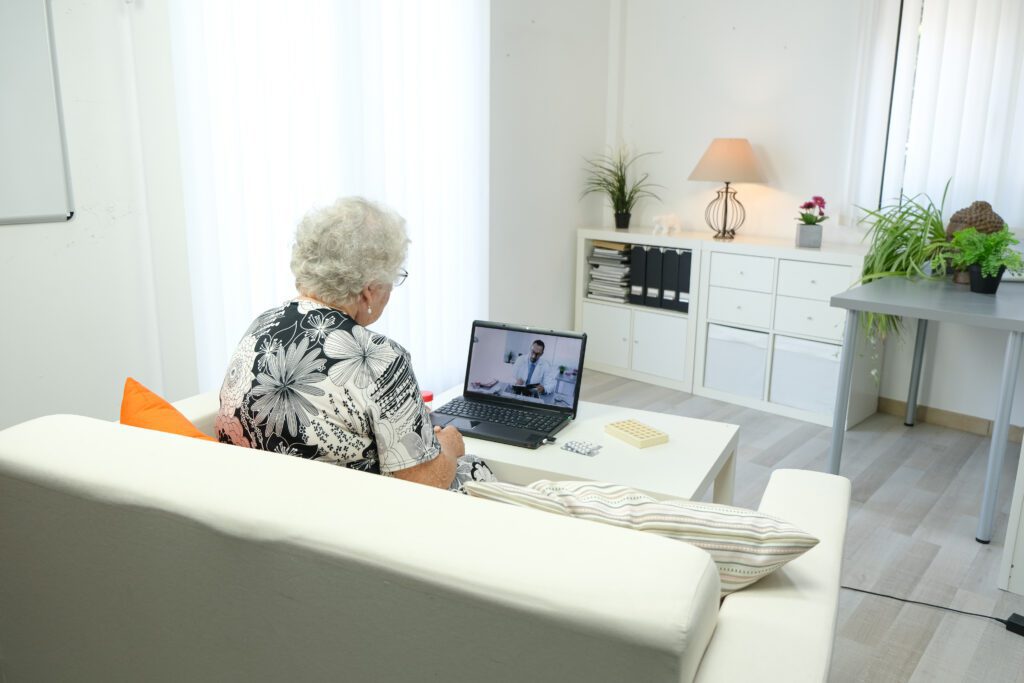Patient care and positive health outcomes rely heavily on the communication between a patient’s circle of care. Comprised of clinicians, therapists, pharmacists, nurses, friends, family, and other medical professionals, a patient’s circle of care contributes to their health outcomes. Each member works together, and provides their own expertise and knowledge, to improve a patient’s wellbeing. While this may seem easy in practice, each new member involved can create new complications for the patient. Busy schedules, competing priorities, and a lack of proper communication tools can all create barriers to effective patient care.
By combining patient care with remote patient management tools, clinicians can actually improve levels of communication within a patient’s circle of care. Remote patient management solves patient problems associated with transportation, aging, busy schedules, and decreased mobility, while also providing tools to facilitate effective information sharing, communication, and collaboration between healthcare professionals.
Real-Time Patient Updates
Changes in a patient’s condition can happen at any moment. Not always cause for immediate medical attention, these changes can sometimes necessitate action. While traditional care would require a patient to call emergency services or visit a health centre, remote patient management allows for immediate input from a care team member. Through the use of remote patient management platforms, healthcare providers have access to real-time updates on a patient’s status. What may have previously taken tens of minutes, to hours, can become a simple diagnosis from the comfort of a patient’s home. Remote patient management allows for effective diagnosis, and sometimes treatment, all through a single application. Members of a patient’s circle of care can all access relevant real-time data, and stay up to date on new treatment pathways.
Effective Care Coordination
As previously stated, effective communication is crucial for providing quality patient care. It allows all the members of a patient’s care team to gather important information, make conclusions, and provide a treatment plan. Effective communication also helps patients and health professionals develop relationships and build rapport which can increase adherence to treatment plans and subsequently positive health outcomes. Additionally, clear lines of communication between all members of the circle of care help to mitigate errors, and ensure enhanced continuity of care.
While communication between care team members is almost always possible, it can be greatly enhanced through the use of remote patient management. Platforms, like aTouchAway, are equipped with tools to facilitate phone calls, instant messaging, and video chats. This is particularly beneficial for patients who require multiple specialists as it provides a central hub for communication. Care health professionals can connect with one another, and join in on relevant calls or chats. Doing so allows health professionals, patients, and loved ones to remain aligned with treatment and goals.
Increased Healthcare Accessibility
Virtual care tools have revolutionized the healthcare experience. Effective care no longer requires an in-person visit, and can, in some cases, be provided more efficiently through virtual means. This is made possible through remote patient management tools that provide secure and easily accessible communication tools. While not a perfect solution, many conditions can be monitored and managed without the need for in-person checkups. The increased accessibility can help patients who lack transportation, live in rural areas, or have mobility issues to receive the treatment they need, and can even save time and money. From a clinician perspective, remote patient management solutions provide care team members with increased access to vital patient information in real-time, ultimately allowing for improved quality of care.
Remote Patient Management for Improved Care

Remote patient management solutions are positive contributors to improved patient outcomes. This is made possible through enhanced communication and collaboration between members of the circle of care, real-time patient status updates, more effective care coordination, and increased accessibility. Patients and health providers using these platforms, when applicable, can expect to see a higher level of care delivery.
Thank you for reading. To stay up to date on current healthcare topics and news about Aetonix, subscribe to our mailing list at the bottom of our blog page. Connect with us on social media using the links at the bottom of this page and share your thoughts!




